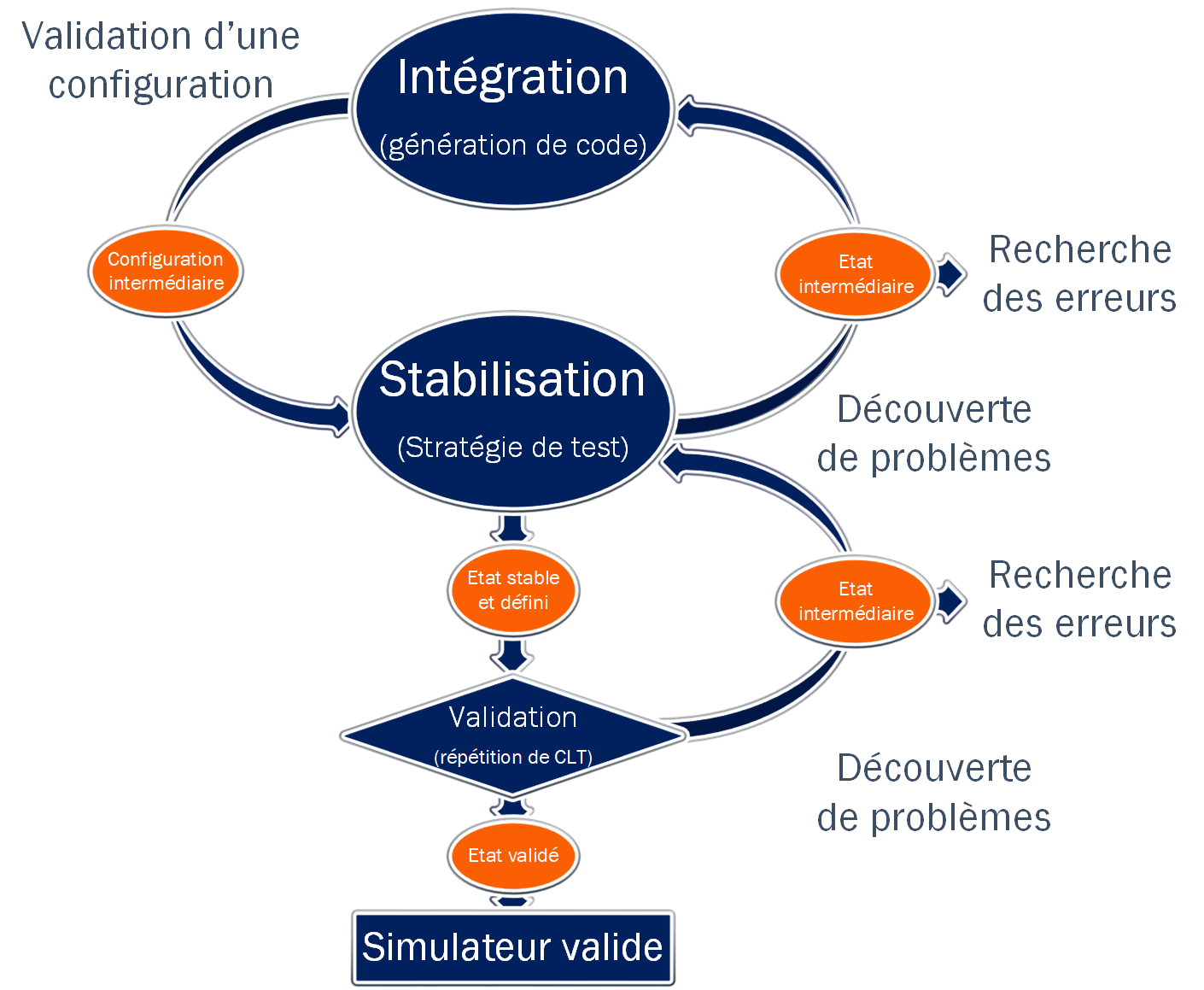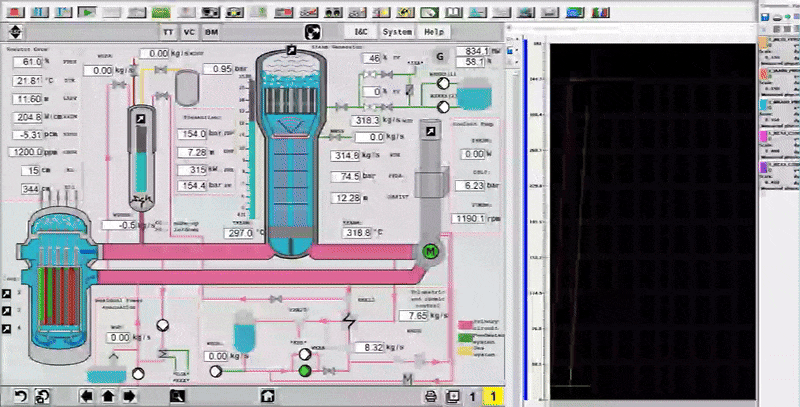Integration and Stabilization in Simulation
"Integration into a simulator is one thing (simple); stabilization is quite another (significantly more complex)."
Indeed, the integration phase and the stabilization phase are the two major phases in implementing a model (for a specific state) on a simulator [14].
However, these phases are closely interconnected: integration is validated if and only if stabilization confirms it. Conversely, stabilization is validated if and only if integration has been properly performed. The following diagram helps to understand the issue central to this internship and, more broadly, to the work of simulation specialists:
Simulation into a simulator of a reactor ramp-down
A power ramp-up (load increase) or power ramp-down (load decrease) in a nuclear reactor refers to the process of adjusting the reactor’s power output to meet electricity demand. This involves controlling the neutron reactivity, a key parameter that governs the chain reaction in the reactor core.
Neutron reactivity (\( \rho \)) is a measure of the deviation of a reactor from criticality. A reactor is:
- Critical (\( \rho = 0 \)): The chain reaction is stable, with a constant power output.
- Supercritical (\( \rho > 0 \)): Power increases as more neutrons sustain the chain reaction.
- Subcritical (\( \rho < 0 \)): Power decreases as fewer neutrons sustain the reaction.
Reactivity changes are controlled to safely adjust the reactor’s power level.
When increasing power, positive reactivity is inserted by withdrawing control rods (which absorb neutrons), adjusting the concentration of boric acid in pressurized water reactors, or modifying coolant temperature or pressure. This increases the likelihood of sustaining the chain reaction. However, inherent feedback mechanisms, such as the Doppler effect and moderator temperature feedback, stabilize the power increase.
When reducing power, negative reactivity is inserted by inserting control rods or increasing boric acid concentration. As power decreases, fuel and coolant temperatures drop, reducing Doppler broadening and neutron moderation. These effects must be countered with additional negative reactivity to maintain the reduction.
Xenon transients, caused by the buildup of Xenon-135 (a strong neutron absorber), can suppress reactivity temporarily after a power reduction. Operators must carefully account for these transients during load adjustments. Additionally, gradual changes are necessary to avoid thermal stress on reactor components and ensure their structural integrity.
Precise control of neutron reactivity during power ramp-up or ramp-down ensures the reactor remains safe and operates efficiently while adapting to changing power demands.
Below is a video showing the different values affected by a ramp down.
Frequent or abrupt power ramp-up and ramp-down cycles accelerate wear and tear on the fuel and its cladding due to thermal, mechanical, and chemical stresses. These effects reduce the overall efficiency and lifespan of the fuel, increase maintenance needs, and can even raise operational costs if fuel replacement becomes more frequent. For these reasons, power adjustments in nuclear reactors are carefully planned and executed to minimize their impact on fuel longevity.
link to video of up and down load : up and down load

